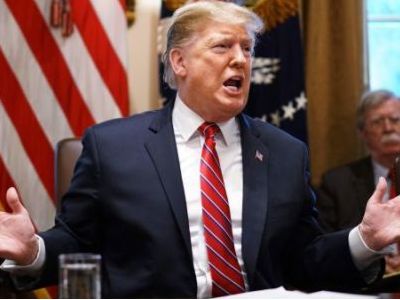Schroder Investment: The interest rate reduction cycle in Europe and America has arrived, pay attention to the divergence of central bank monetary policies.
2024-10-30 15:25
Based on current interest rate changes, market expectations indicate that by the end of 2025, the Federal Reserve's target rate will decrease from its current level to the neutral interest rate level.
Schroders Global Fixed Income Investment Director in Hong Kong, Wu Meiyen, stated in a post that, as expected, the Federal Reserve announced a 50 basis point cut in the federal funds rate in September, which was more accommodative than the market's expectation of 25 basis points. This indicates that the Federal Reserve's focus has shifted from inflation to the current state of the job market, and is more inclined to send dovish signals in response to negative conditions rather than taking a hawkish approach to positive conditions. Based on the current rate changes, market expectations show that by the end of 2025, the US federal funds rate will decline from its current level to a neutral rate level.
Despite the US rate cut being in line with expectations, the performance of the market shows that the yield on the US 10-year Treasury bond has increased instead of decreasing since the rate cut was announced. This reflects that while inflation pressures in the US are gradually decreasing, job market data remains strong. In addition, fund movements can also impact bond market performance. For example, China announced a larger-than-expected economic stimulus measure before its Golden Week holiday, causing funds to shift noticeably towards the stock market. Fund flows and policy changes could both influence bond prices, leading to the US 10-year Treasury bond yield potentially reaching 4% after the end of China's long holiday.
In addition to macroeconomic factors, geopolitical changes also pose challenges for investors. The uncertainty brought by the new Japanese Prime Minister's appointment has affected Japanese stock performance. Renewed geopolitical conflicts in the Middle East have caused oil prices to rise. The upcoming US congressional and presidential elections in November will also test the market with increased volatility.
According to theory, central bank rate cuts should lead to lower rates and higher bond prices, making it a good time to invest in the bond market. However, given the numerous uncertainties, investors should be more flexible and cautious in positioning their investments in the bond market to truly benefit from the rate cut advantage.
It is important for investors to be flexible in their duration positioning to address interest rate risks. While the yield curve has been inverted for a long time, it is expected to normalize gradually during the rate cut cycle, with short-term bond yields expected to be lower than long-term bond yields.
In the current environment where major central banks including the US, UK, and Europe have started cutting rates, and China has intensified its efforts to boost the economy, investors should consider the duration positioning of European bonds over those of the US and UK due to the higher recessionary risks in Europe.
Schroders Global continues to favor investment-grade corporate bonds with high credit quality, as these companies are better equipped to manage downturns in the economic cycle and benefit from lower operating costs resulting from lower interest rates. In terms of regions, European bonds offer more attractive valuations compared to the US, with a higher potential for bond price appreciation. As for high-yield bonds, investors should focus on deploying capital in financially stable companies with higher profitability.
In the Asian bond market, the year has seen favorable performance with higher yields and significantly reduced default risks. Schroders Global prefers financial and banking sectors in Asia due to the higher interest environment, and actively explores high-quality corporate bonds from Australia and Japan. Chinese USD bonds may require further financial stimulus to support a broader economy, particularly the real estate market. In the long term, a recovery in household and business confidence could drive real demand and strengthen market sentiment.
Global bond markets have seen significant price rebounds since the second half of the year in response to rate cut expectations. Schroders Global remains optimistic about the bond outlook after entering the rate cut cycle, as macroeconomic data increases the possibility of an economic "soft landing." Different responses from central banks to data releases may lead the firm to increase the duration of bond investments during market volatility to capture more returns, and policy divergence may bring different bond investment opportunities.
Schroders Global expects to enter a more accommodative rate environment by the end of 2024, which is favorable for global bond market investors. However, the US presidential election remains a focus for the market, which could heighten market volatility. Investors should adopt a globally diversified approach, emphasize high credit quality, and maintain flexibility in response to interest rate risks when participating in global bond market opportunities.
RECOMMEND

Fubon Fund: Hong Kong stocks are expected to experience significant volatility next year amid China's large-scale deleveraging period.
29/11/2024

Shengjing's 2025 Investment Outlook: The economic fundamentals of emerging markets in Asia remain stable.
29/11/2024

The Fubon Solactive Core Diversified Asset Index ETF is listed on the Hong Kong Stock Exchange.
29/11/2024


